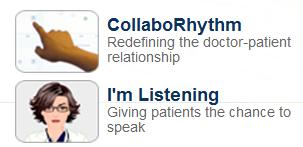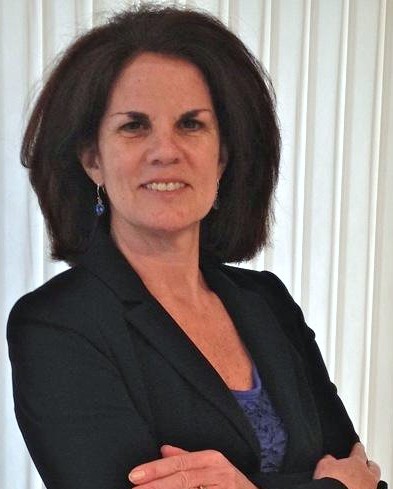Blazing Your Social Media Engagement Path
 May 18, 2010
May 18, 2010  “We’re already using Facebook, YouTube and Twitter. Where do we go from here?”
“We’re already using Facebook, YouTube and Twitter. Where do we go from here?”
“We have several separate and disconnected social media efforts now but we want to bring them together as part of a social media plan.”
“How can we listen online and engage consumers around wellness?”
“Where do we begin to develop a private online community for ‘Women’s Health’ to use for our product research?”
Businesses are increasing their investments and are ready to move to the next level in their social media efforts. They are forming “Social Media Committees” to begin defining and prioritizing their social media initiatives. Every company can create a unique social media plan drawing upon their set of healthcare relationships, partnerships and resources to deliver value to the consumer. However, how many are actually designing their plan with consumer engagement in mind?
Viewing Your Plan from the Consumers’ Eyes
As you are creating more social media, keep in mind that consumers are already overwhelmed with the current number of online healthcare destinations for them to learn, share and connect with others like them. Before investing any more resources, think about how you can bring consumers relevant and compelling “content” and capabilities that they will value (as opposed to what you have to offer).
Stepping Stones to Follow:
After you’ve defined your goals and assembled your team, these are the steps to move your social media initiatives forward.
1) Listening to Your Target Consumers (Segments)
One essential best practice is to gather insight to understand the health and wellness issues and interests of these consumers and to leverage that information into action. Consider all the opportunities that you can uncover by mining “consumer- generated content” both within your own company’s social media and from online conversations outside of your site and your social media boundaries.
What makes this more complex is that your target consumers have varying needs so you will want to listen to the needs of each of your priority consumer “segments”. For example, you may segment your target consumers by condition, gender or life stage. Where will you go to listen to your priority consumer segments?
2) Engaging Consumers & Acting on their Insight
Through exploratory discussions with your target consumers, you can discover areas of value such as new online decision tools, new ways to “package” content and new channels to deliver this content. Often times, their ideas shed light on new partnerships which yield differentiated products, services and programs for your company. These insightful ideas are often from your key contributors. The ideas make your community dynamic and motivate others to participate. How can you exploit their influence across your social media?
Once new opportunities are surfaced, the key is to define them with your target consumers. By “co-creating” with them, you will ensure that you have conceptualized, developed and validated these new offerings to meet their evolving needs.
Another benefit of engaging consumers is capturing their words which can be injecting into your marketing channels (e.g. website, social media, program brochures, etc).
3) Evaluating Your Social Media Engagement Initiatives
You will need both qualitative and quantitative information to evaluate your social media initiatives against your business goals.
The qualitative information that you collect through your social media efforts is very valuable since it gives you and your team insight to guide your product, partnership and marketing strategies. It is essential to track how these insights are being used by your company to measure their real value (e.g. saving money, generating revenue).
There is a set of quantitative metrics that you will benchmark and monitor to identify your most effective tactics. These metrics are often around participation in your various social media activities.
How About Your Social Media Engagement Path
- What have you learned while listening to consumers online?
- Are you launching new engagement tools to get your target consumers to interact with you?
- How are you mining and leveraging insight from consumer generated content to inform your company’s business strategies?
You have an opportunity to devise a comprehensive plan with best practices and processes for exchanging value with your target consumers through your social media initiatives. Instead of launching tools in isolation, take the lead in bringing your team together to develop a Social Media Engagement Plan designed with your business goals in mind.
Patients in Control Demonstrated in MIT's New Media Medicine Group
 May 11, 2010
May 11, 2010  Recently, I sat down with Dr. John Moore, Researcher in the New Media Medicine Group of the MIT Media Lab.
Recently, I sat down with Dr. John Moore, Researcher in the New Media Medicine Group of the MIT Media Lab.
“With our CollaboRhythm, we are redefining the relationship between the patient and their doctor”, explained John. “Instead of being in control, the doctor is serving as a coach to help the patient with their care planning and delivery.”
As I watched the demo, what surprised me the most was that the patient was interacting with the flat screen displaying her information and deciding about her upcoming treatment. John described what was happening. “This is ‘shared decision making’ in action where the patient determines what changes she wants to make and even schedules her medication while the doctor is by her side providing guidance as needed.”
When the patient leaves her doctor’s office, she is ready to follow through on the plans she made. “All of the follow- up information has been pushed to the electronic devices that she will rely on. Her pill dispenser has been automatically programmed. Her mobile phone is ready to receive the reminders and the necessary sensors are in place to track her activities”, John mentions with a smile.
Next, I saw a demo of the “I’m Listening” project, designed to bring the patient into her own care management process. The patient is relaxing on a coach in her living room with a cup of coffee as she is having a conversation with an “avatar” on her flat screen television. “The avatar agent asks the patient questions to gather information for her clinician. This gives the patient more freedom to share her story at her own pace”, explains John. When the patient wants to show the sore on her foot to her doctor, she lifts her foot in front of the build- in camera to have a picture taken.
I was interested to learn that this system takes all of the information gathered including the ‘words of the patient’ as well as photos and organizes it for her next doctor's appointment which she schedules. Notice the time savings for the doctor and the convenience for the patient.
With both projects, the patient has a more proactive role in managing their own health, the doctor remains in an “expert” role and their collaboration and communication are enabled through technology.
What About You?
- What are you doing to empower consumers?
- How are you engaging consumers to share their health data with you?
- Are you gathering and organizing the consumers' health information to support care decisions?
Although MIT's patient- focused products were developed in the lab, there is so much we can learn from their approach. They put the patient in control of their health with access to information and collaboration with their clinician for guidance. Technology plays an important role of seamlessly moving the patient's information to where it is needed (e.g. devices) for further interaction. During these interactions, technology enables the collection of patient data to support shared health decisions.
"You Don't Know Jack"... Missed Opportunities to Engage Him
 May 3, 2010
May 3, 2010 
Let me tell you about Jack…
Last week, Jack celebrated his 54th birthday with his wife and two teenage girls. His daughter Alyssa told him to "try not to finish the cake when no one is looking”. Jack has packed on the pounds in the past few years and is currently 60+ pounds overweight. Alyssa teased her father about how many miles he will need to bike to work off the extra slices. Jack’s wife Joan is concerned since she knows that he is at risk for Diabetes.
Several months ago Jack complained to his doctor that he was disgusted with his weight and was ready to make a change. Over the last few years, Jack tried several diets but he still doesn't make the right dietary decisions. Jack told his doctor that he was considering bariatric surgery and asked for a referral to meet with a surgeon. Maybe his doctor could have “prescribed information” for Jack such as watching a video on a weight loss approach which has been successful for others like Jack or signing up for a eNewsletter with tips to control his weight through diet and exercise from a "trusted source".
Jack’s Health Plan is after him to participate in their Pre- Diabetes Program but Jack would rather focus on other health issues. Jack can’t stop thinking about the bariatric surgery. He is worried about taking such a big step but does not know about other less invasive options. Jack is not aware of the “decision support tools” that his health plan has online since he has not been to the member portal in years. He also ignores the mass produced print and eNewsletters since they do not address his specific interests. He had to contact this health plan to obtain the referral to the specialist but has not received any information from them which will help him understand his options.
Jack’s employer launched a wellness incentive program with weekly on-site challenges offering rewards for his “steps”. Unfortunately, Jack travels frequently and misses these competitions. He bikes on weekends but that is not part of his employer’s wellness incentive program.
When he has time, Jack visits an online community of people interested in weight loss. Too bad this website does not have a sub-community of business travelers since this “segment” has the same challenges with eating out every meal and having limited time to work out.
There are many opportunities to step in to educate, engage and motivate Jack to follow the path to better health. What can you do to get to know and help Jack?
Series: Engagement Path #5- Reward Me
 April 22, 2010
April 22, 2010  Whether companies are launching “challenges” or online tools for healthy change, they are putting rewards in place for maximum response. For example, they are offering consumers rewards for participating in a smoking cessation or a weight loss program as well as winning the team competition for the most steps. With the increase in funding for prevention and wellness, rewards programs are getting more attention.
Whether companies are launching “challenges” or online tools for healthy change, they are putting rewards in place for maximum response. For example, they are offering consumers rewards for participating in a smoking cessation or a weight loss program as well as winning the team competition for the most steps. With the increase in funding for prevention and wellness, rewards programs are getting more attention.
"Last week, I was awarded a wellness day off and I feel like a new person!"
“The rewards program has helped me. I am more aware of getting the steps that I need to make to my goal each day.”
“My company started awarding points to get us to be healthier. The program started off with lots of excitement but has kind of fizzled out.”
“Reward Me” Opportunity: Provide currency of value (e.g. money, time off) in exchange for desired behaviors while keeping the rewards dynamic, tiered (e.g. higher level for achieving stretch goals) and personalized to the individual.
Engagement in Action:
- Employers such as REI and Bridgepoint Education are using Limeade to engage and empower their employees. With the Limeade platform, employers enable their employees decide what they want to do to earn points for rewards. With Limeade’s mobile application, employees can even plan, track and monitor their goals while on the go. In addition to their own activities, employees may choose to participate in challenges from their employer or from others in the Limeade online community such as participating in an online coaching session, attending an onsite seminar or completing the challenge activity. For example, users challenge others to train for and complete local races, lose pounds, not drink for a month, or even "get to work without your car the most times this quarter". Employers challenge employees to "Exercise 30 minutes, 6 days a week" to "Contribute (your time or money) to a charity of your choice this month", to "do something for YOU in the next two weeks", or even "post an essay about how you've been inspired to change your life". Rewards typically fall into two categories; 1) an incentive benefit related to health care -- lower premiums, deductibles or access to a superior plan, or 2) other stuff their specific employees value -- vacation time, ski lift tickets, or dinner with the CEO.
- According to Forbes, Ochsner Health Systems and many other employers have used the Virgin HealthMiles platform with the “Pay for Prevention” program to reward employees for healthy behaviors. Points are given for the measurement of vitals and tracking of activity. Employers are testing different rewards such as lower premiums, gift cards and days off and the reward value can range up to $2,500 per year. In addition to challenges from a specific employer, Virgin also runs competitions across the employers for all participants in their network. For the selected challenge activity, the participant wins entries into a lottery for travel such as a trip to Sir Richard’s Private Island in the Caribbean.
Employers need to be creative in how they are packaging, positioning and promoting their rewards program. The program participants are in the best position to advise their employer on suggested rewards, reward structure and rewarded behaviors. Think about how the rewards program may differ for employees working in a call center or retail store compared with those employed by a financial services firm.
The biggest challenge for sustaining participation is to determine ways to reward consumers for increasing the time and frequency on activities they enjoy doing (e.g. swimming, biking) and for making healthy decisions about their diet whether they are in a supermarket or restaurant.
Series: Engagement Path #4- Challenge Me
 April 15, 2010
April 15, 2010  Health related competitions are everywhere. Not just on TV with the Biggest Loser but much closer to home. We are being challenged by our co-workers, colleagues and our community. These challenges are being tied into online games, social media, mobile and wireless tracking devices. Since challenges leverage relationships, they are extremely viral and successfully generating participation. Think about how much likely you are to respond when a challenge is sent by your friend or co- worker.
Health related competitions are everywhere. Not just on TV with the Biggest Loser but much closer to home. We are being challenged by our co-workers, colleagues and our community. These challenges are being tied into online games, social media, mobile and wireless tracking devices. Since challenges leverage relationships, they are extremely viral and successfully generating participation. Think about how much likely you are to respond when a challenge is sent by your friend or co- worker.
“Debbie- You will be joining your GiantSteps team for a walk at noon.”
“Debbie- Your team is 950 steps beyond for the week.”
“David has challenged you to lose 5 lbs in the next 60 days.”
“Challenge Me” Opportunity: Enable consumers to initiate and participate in an individual or group competition as well as influence others throughout the challenge that is designed to encourage healthy behavior.
Engagement in Action:
- Cleveland Clinic launched the Shape Up The Nation Program to their employees. Employers continue to play a role in motivating their employees to become more healthy and are rolling out programs with a competition component. With Shape Up The Nation, Cleveland Clinic goes further by measuring success based on weight loss, BMI as well as activity (number of steps). In addition to strong participation, Cleveland Clinic is experiencing high satisfaction rates for the program and has rolled out several of these challenges throughout the year.
- Livestrong has devised the Dare Program which gives people the option of taking or giving a dare such as “Dare to get more sleep”. There is also a companion “Dare to get more sleep” community where members share experiences as well as post links to resources (e.g. articles, videos) on secrets for a better night sleep.
- Contagion Health's Get Up and Move is a "social game" where challenges are launched by friends and family to motivate healthy activity. For example, 'I will take the stairs this week' if 'you will walk to Starbucks'. Unlike many of the 6-8 week challenges, these mini-challenges result in quick successes and can be fun. Those of us that are competitive can use this tool to initiate creative challenges with close friends. And don't be surprised if your friend sends a follow up challenge back your way.
Most “challenges” are physical competitions which is valuable to get consumers moving. Think about how challenges can also be utilized to test for knowledge, furthering the “teach me” opportunity. Are you smarter than your co-worker?


